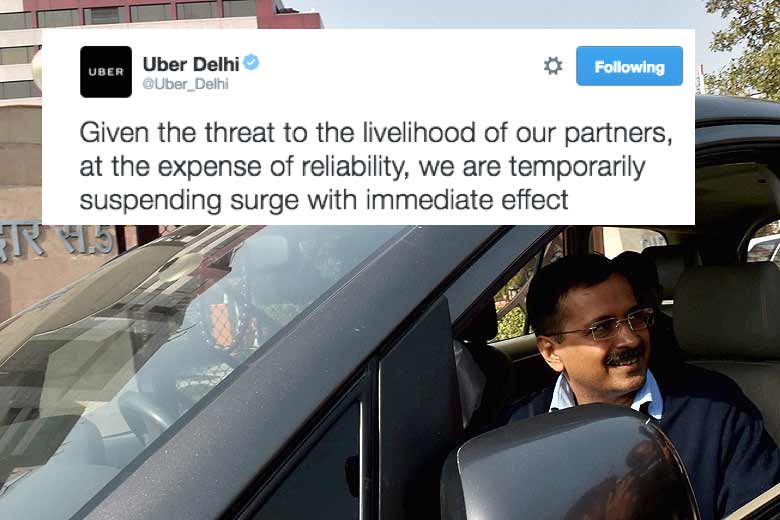State governments are ganging up against taxi aggregators, and how. After Karnataka had announced that it had capped surge prices in the state and had seized vehicles that continued to apply surge pricing, and Maharashtra had come up with similar regulations, Delhi too has banned surge pricing. And it’s gone a step further than in other states – it managed to get Uber to announce that it was ending surge prices with immediate effect.
What appears to have hastened this process is Delhi’s odd-even rule, which came into effect from April 1. The rule effectively meant that half of Delhi’s population couldn’t use their cars on any given day, and this led to a spike in demand for cabs, which led to high surge prices. After Delhi’s population had complained of prices that were 3-4 times the normal fare, Chief Minister Arvind Kejriwal had warned Uber and Ola of “strict action.” His action seems to have worked, and barely a day later, Uber withdrew surge pricing.

What’s unmissable in the announcement, though, is Uber’s tone. It talks of “a threat to the livelihood of our partners”, which means that Uber’s hand was clearly forced into making the decision. It is likely that they Delhi government had threatened to shut down the service had they continued with surge pricing.
Both Uber and Ola claim that surge pricing reflects market demand, and higher prices help get more cabs on roads, thus eventually decreasing prices. Uber also states that it’s the drivers that get 80% of the revenue from surge pricing.
Uber’s Gagan Bhatia, general manager, North, has given the following statement in an email to OfficeChai.
Uber regularly does surge pricing when demand outstrips supply. Remember, we do not own cars nor do we employ drivers. Higher prices are required in order to get cars on the road and keep them on the road during the busiest times. This maximises the number of trips and minimises the number of people stranded. The drivers have other options as well. In short, without Surge Pricing, there would be no car available when people need it.
Now granted, that the prices are sometimes higher than our usual low fares. But we notify every customer in big bold images in text, which each customer has to confirm in order to request. Furthermore, every customer also has to type in what the multiplier was in order to double confirm that they understood what they were agreeing to.
Airlines and Hotels are more expensive during busy times. Uber is as well. We don’t just charge to make a buck – we take a small fee of the transaction, and the vast majority of the fare goes to the driver so that we can maximise the number of drivers on the road. The point is in order to provide citizens with a reliable ride, prices need to go up temporarily. Despite this, 92% of the trips in Delhi happened on regular fares, even during the first phase of odd-even scheme.
In the end, Uber is reliable, always, and we will create a system that maximises the number of people that can get safe and reliable rides. Consumers always have a choice to take a surged trip. Not surging is saying citizens shouldn’t have the option. Not surging is saying we should be just like a taxi and be unreliable when people need us most. These are outcomes that take choices away from the consumer and make it harder to get around cities – these are outcomes that we put a lot of hard work in to avoid so that at least you have the choice if you want one.
However, given the threat of the Delhi government to cancel permits and impound vehicles of our driver partners, we are temporarily suspending surge in Delhi with immediate effect. We hope to work with the government to keep Delhi moving especially during this time when the citizens need us the most.
While other states are still struggling to implement their policies against surge, the Delhi government has taken the most decisive decision against surge pricing yet. What this means for the aggregator cab industry remains to be seen.